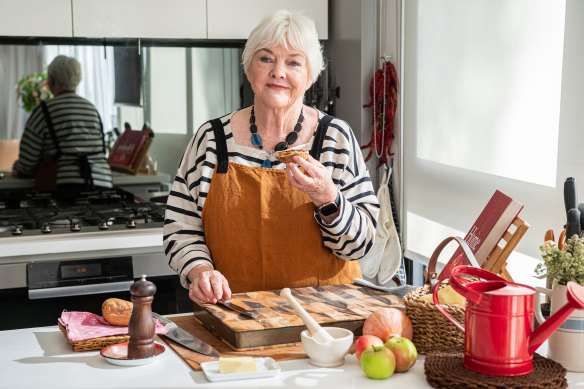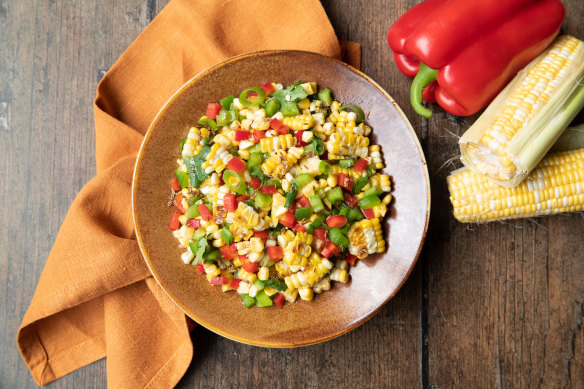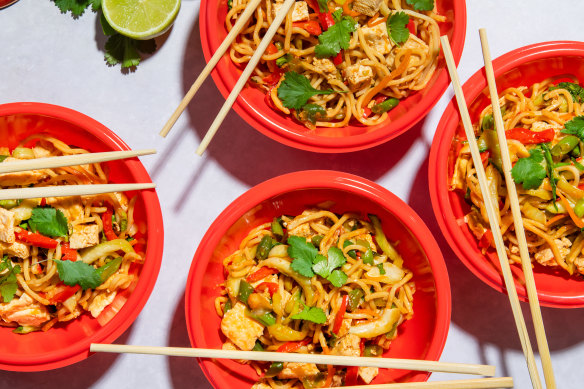
Children are more than willing to “roll up their sleeves” in the kitchen and garden, the food writer, educator and former restaurateur believes.


Kids hate eating greens, can’t handle spicy foods and won’t try new ingredients, right? Wrong, says Stephanie Alexander. In fact, the opposite is true, the food writer, educator and former restaurateur believes.
Freshly picked produce, tricky recipes and aromatic curries (yes, even chilli) – children can enjoy them all, with the right encouragement.
In the 20 years since launching her Kitchen Garden Foundation, Alexander has found children are more than willing to “roll up their sleeves” in the kitchen and garden.
Through the program, which runs across hundreds of Australian schools teaching students to plant, grow and harvest food, she has seen ample evidence of young people’s natural curiosity and willingness to try new foods, especially ones they’ve grown themselves.
“It makes a colossal difference to how kids respond to fresh food, particularly vegetables,” she says.

“If they’ve actually dug the hole themselves and watched the bean or whatever it is grow, they do have a sort of proprietorial interest in its welfare.
“They also learn to understand that you need to wait for things – not everything is available all the time. So it’s just a very lovely way of introducing children from as young as three or four to the idea of seasonality.”
Gardening encourages children to work together and is “utterly, utterly inclusive”, Alexander says. “You’ll find that some kids who don’t perhaps shine in some parts of their schoolwork might be brilliant at wheelbarrowing.”
And while gardening can involve plenty of challenges and false starts, such as snails, caterpillars or poor weather, these also make it a great way to learn.
“[Children] know that stronger plants survive. And the way to get stronger plants is to have good soil,” she says.

“They get very involved in collecting scraps around the school to feed their compost heaps, and they even quite enjoy turning the compost, which is a tricky job.”
Alexander suggests presenting food to children in interesting ways – on platters to share, or by incorporating vegetables into attractive pasta dishes, sausage rolls, soups, stews and that perennial favourite, pizza.
Her latest cookbook, Fresh, doesn’t shy away from complex cooking or flavours, and instead promotes variety and veg-forward recipes any child can help prepare.
“It’s actually using vegetables in an appropriate way so that they’re part of a meal,” she says. “A blob of green or a blob of orange on the plate isn’t always the most exciting way to introduce a kid to ... spinach or pumpkin.”
Involving children in meal planning and preparation, teaching them different techniques, exposing them to diverse cuisines and giving them the skills and confidence to work safely around heat and sharp knives all help as well.
Parental modelling is crucial, by trying new dishes together, making pasta as a family, pounding whole spices in a mortar and pestle, and generally being positive about food, rather than making disparaging comments or “hiding” vegetables in dishes.
“We can’t expect a four-year-old to make a beautiful stew [by themselves], but we can expect a four-year-old to stand on a stool and help us spread a bit of dip on ... a piece of toast and to have a taste of it.”
At the very least, parents should prioritise eating with their children, Alexander says.
“You can’t always do it every day. And I’m fully aware of all the pressures that are on all of us,” she says.
“But if it becomes something that is really valued within the family, like you always have lunch together on Sunday, or you always eat on a Thursday night together around the table, [then] that becomes something that is highly valued.”
The best recipes from Australia's leading chefs straight to your inbox.
Sign up


























